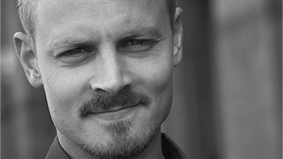The good people of New Media Age kindly asked me if I would write a piece for them and so I penned an opinion column (I’ve not been short of opinion lately it seems) on being big, and being small on the internet:
We like big numbers, they make us feel comfortable. And the internet is very good at big numbers. The global internet population is likely to pass 2bn people in 2010. According to PricewaterhouseCoopers, internet advertising will overtake newspapers as the second-largest US advertising medium by revenue behind TV. In the UK, some are forecasting it will overtake print to become the largest ad medium of all.
Image courtesy
The era of mass media, mass marketing and broadcast liked large numbers too. Consumers were grouped into vast, homogenous groups based on amorphous characteristics like age or demographics, and apparent propensity to act in a certain way. Business felt comfortable when it could manage relationships at scale. When they wanted to impress, media owners pulled out a big number. In reality, those people weren’t all the same, those relationships weren’t managed and that big user number was only one indication of how engaging that site owner’s content was.
But we’ve moved on since then. In our, often obsessive, focus on scale, we’re underplaying the greatest characteristic of the internet – that it’s at its best when it’s small. Tim Berners-Lee (and he should know) once called the web “a subset of humans interacting”. There’s nothing wrong with big, but let’s not forget that it comprises lots of small. The web is the ultimate example of what technology and marketing pundit David Weinberger called “small pieces loosely joined”.
Bud Caddell, strategy director at US crowdsourcing agency Victors & Spoils, once described his job as helping brands “remember what it was like when they were small, because on the internet they are”. Small means personal and relevant. One of the lessons that social media teaches us is the value of understanding depth and type of interaction, and exactly who’s bothered, excited and passionate about your market, your content or your product. The web is a participative environment, so benchmarking it by user numbers and views alone makes little sense.
“Don’t count the people you reach, reach the people that count,” said David Ogilvy. The web is the greatest opportunity we’ve ever had to do this. One of the most interesting dynamics in marketing today is that between art and the algorithm. The currency of the former is ideas, great ideas that spread. The currency of the latter is data. Ever-increasingly sophisticated techniques for targeting and relevance. One starts small and can lead to scale; the other starts big and becomes small. The mistake in applying ‘big’ broadcast thinking to networks is that we don’t think small enough.
Original column on New Media Age.
Image source: Project 404
Original Post: http://neilperkin.typepad.com/only_dead_fish/2010/08/keeping-it-small.html




